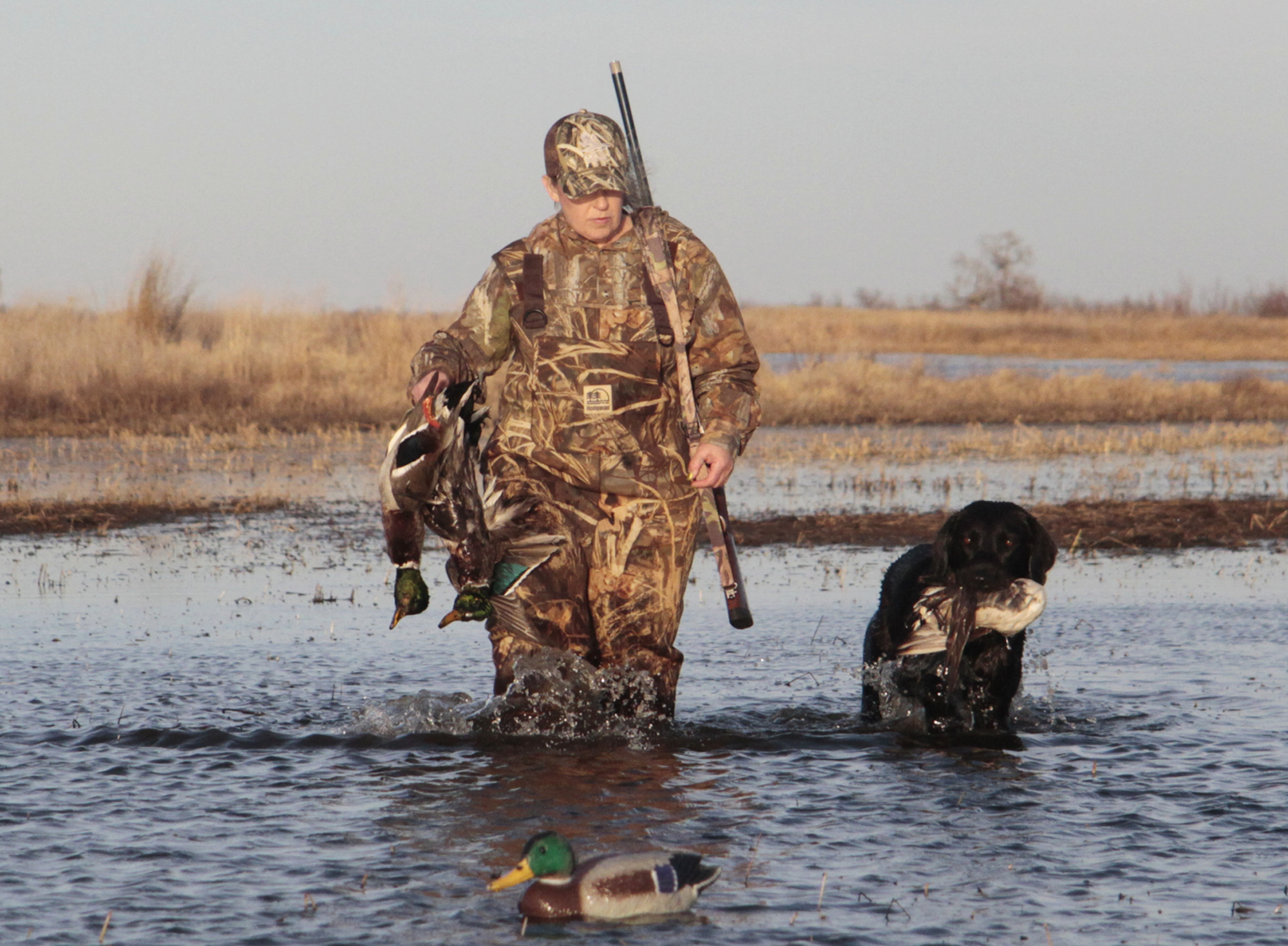
They’re called “stain birds” by longtime central Kansas duck hunters. Often drake pintails or widgeons, their white breast feathers carry a light reddish-brown stain.
It’s the same color as the soil and water in Oklahoma, where the birds probably began their day before heading north to Kansas. Word gets out when one of us gets a “stain bird,” because that means great hunting is at hand.
Most waterfowl hunters pray for cold fronts with cold and snow even harder than highway departments pray against them. Being at a Kansas marsh, when cold is freezing water and snow is covering food in the Dakotas, can be a special time.
I fondly remember mornings when the snowflakes were as big as poker chips and gunning great for migrating mallards, teal and canvasbacks amid a brutal cold and wind that needed many clothing layers for my comfort.
Just as fondly, I remember being in the same marshes under high, blue skies and needing just a hoodie for warmth while having just as good of hunting for the same kinds of ducks.
Ducks and geese aren’t just down and back once creatures in terms of migration. They move back and forth as conditions permit.
Especially late in the season. Primed for spring nesting grounds, they like to be as far north as possible.
Old timers have long said the third day of temperature around 50 degrees is when ducks return to what had been iced-up waters in Kansas. If one of those days carries a strong south wind, so much the better.
Many times I’ve seen it just such over the past 20 years. A marsh frozen and basically void of ducks for a week or more will thaw and seem to instantly be covered in ducks.
Sometimes the flights begin at dawn. A few times we’ve seen nothing the first two hours of light on such warm days. Then, the flights suddenly start and by noon we’re carrying out limits, with a few “stained birds” in the mix.

Hunting was sparse at best the last weeks of the 2018-19 seasons for friend Bob Snyder and me on the shallow marshes we hunt. Then a warm up began on Thursday night. Sunday morning, the third day, the pond held hundreds of ducks and geese when we arrived.
Like cold weather migrations, the birds were tired, new to the area and came to decoys like moths to flames. We took turns shooting one greenhead mallard at a time until we each had a limit of five. One bonus bird was a drake widgeon. The other a drake pintail with a tail as long as a licorice stick.
Bob folded the pintail as neatly as a clean pair of socks as it hovered over the decoys. My Lab, Cade, sent water splashing going and coming back on the retrieve. He was still yards away
when I saw the familiar reddish stain on the drake’s chest.
It was another great migration hunt for the memory banks, and we didn’t have to battle the cold to enjoy it.



